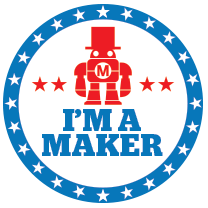Last week, I attended the Ed Tech Teacher iPad (#ettipad) Summit in Boston. The entire conference was focused on using iPads … and yet, it wasn’t. It was announced at the start of the conference that if you were there looking for “an app for that” then you were in the wrong place because #ettipad was a summit for educators to think about the pedagogical implications of integrating these devices. Of course, plenty of practical tips were still shared and there was a lot of technical guidance being provided and exchanged at the conference.
I appreciated that the core focus wasn’t so much on what tech we were using but how and why we were using certain apps or tools. For example, multiple sessions and speakers discussed the idea of “app smashing” or “app flows” which combine and build upon content that’s created in multiple apps to develop a unique product that students can share with the world. It doesn’t necessarily matter which apps you use in your flow, as long as they’re “empty apps that users fill with knowledge and share.” This idea of creating and sharing knowledge was a key part of David Weinberger’s opening keynote. He raised some questions and ideas about how we define knowledge that I want to continue examining and reflecting on.
In the past, we have defined knowledge based upon the scope of what we can manage, so facts and stories were cut from encyclopedias or words were left out of dictionaries to prevent us from having endless books that no one could carry. Now, how we acquire and use knowledge is changing. We have new, digital mediums, which gives us access to content at a much faster rate and on a larger scale. Everything is linked together, so while a Wikipedia article may not encompass all of the data needed to explain a topic, it is full of links to other sources which provide more and then more information. Even academic research is being pushed out to the public for faster review and discussion. As Dr. Puentedura mentioned, the public now has access to Watson, the IBM supercomputer that could make it possible to “Google” answers to complex medical problems or other challenging questions.
The public nature of knowledge was something else Dr. Weinberger emphasized in his keynote, saying that if ideas are to be scalable, they have to become public and be shared early, with large groups of people so they can be available for debate and disagreement. This also connects to the value of having open access and making (educational) resources open and available for anyone to use and remix or build on. This includes our students’ work and the knowledge they’re building! This process can be messy but Dr. Weinberger suggests that it’s from that messiness that we end up with new knowledge that can create change and growth.
The problem with all of these developments and this redefinition of how we conceptualize knowledge is that our school systems and classrooms are not necessarily structured to support it and instead, teachers end up trying to teach students to stick to old (outdated?) ways of learning and knowing.
It seems like this is where tools like the iPad and educators who are open to adapting their pedagogy to new definitions of knowledge, can have an important impact. If we can be willing to question what we know and how we know it, we can help our students begin that same journey of looking deeply at knowledge and designing new ways to share and express it. As we try these new projects and approaches, we might fail and we might fail often but I think many of us have come to see the value in failure and modeling that experience for students.
So, if our goal is to create engaging, agile learning environments where both teachers and students feel like they are striving to achieve something awesome, we need to think critically about our recipe for teaching. Does it include ingredients like:
And finally, does it include your students’ voice and choice?
You should treat your lessons like recipes, let the kids help make it, it’ll taste better to them. @shawnmccusker #ettipad
— Carl Hooker (@mrhooker) November 15, 2013
If you want to hear more about #ettipad, check out the notes and ideas that I compiled in Storify.
P.S. I realized that while I called this post “What I learned at the #ettipad Summit” I really should clarify that this is some or maybe even a little of what I learned. There’s much more I’m still reflecting on and I hope to share more of my takeaways as they become clearer and better synthesized.


















You must be logged in to post a comment.